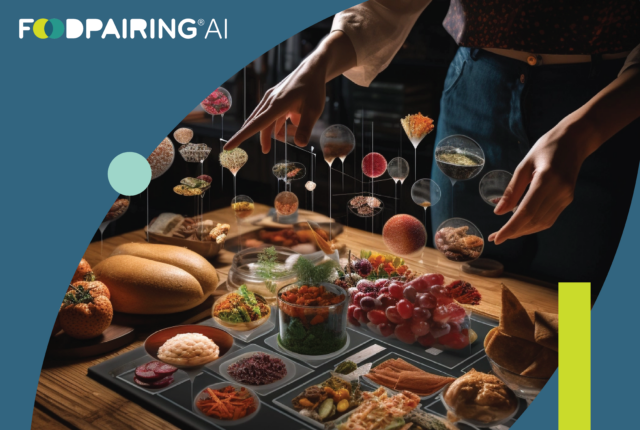The impact of a growing global economic and supply chain crisis
The recent global health pandemic hasn’t been kind to most industries and businesses, including FMCG and CPG. The macroeconomic challenges resulting from the disruptions in the global supply chain in the past three years have left many food and beverage companies grappling with the rising costs of raw materials, ever-falling margins, and the resulting increase in pricing pressure.
Businesses of any size are finding themselves in an unprecedentedly long economic predicament and are having to swiftly reinvent their entire modus operandi just to stay afloat. Consumers, on the other hand, are having to work with increasingly tighter budgets and are struggling to make ends meet in many cases.
A consumer purchase landscape that’s changed for good
According to a McKinsey’s New Model for the Consumer Goods Industry study, leading brands in each CPG category have generated only 25% of growth in the U.S., despite producing 50% of total sales. And Food Navigator USA has recently found out that private label is gaining market share across all retailers, as consumers become highly sensitive to rising prices by mostly shopping promotions, cutting on non-essential items, and prioritizing value options.
According to IRI data, in key European markets, the number of private label loyalists (consumers who purchase retailer brands more than 75% of the time) is now equivalent to established brand loyalists.

Leading brands in each CPG category have generated only 25% of growth in the U.S., despite producing 50% of total sales.
Private label dominance in an unstable economic environment
Over time, white and private label ranges have left their reputation for questionable quality behind to become a credible offer in the eyes of consumers. The rise of challenger brands was also accelerated by the pandemic, when big companies often struggled to meet demand, prompting shoppers to trial smaller or niche brands. With today’s consumers increasingly open to testing new products and more ways to communicate new offers to the market, the playing field is becoming more crowded, and fragmentation is at the expense of large players.
First-time vs. repeat purchase considerations
The factors that drive first-time purchases differ from those that influence repeat buyers. It is considerably easier to get consumers to try a new and exciting snack or drink once. Getting them to love and adopt it in the long run is an entirely different story, still. In previous decades, it was common for consumers to favor one brand or product over another, thanks to a single point of preference.
Today’s digitally savvy, well-informed shoppers are considering the whole package when it comes to adding a product to their habitual shopping list, nevertheless.

In a rapidly changing geopolitical, economical, and societal environment, brands need to better understand and rapidly respond to the drivers behind consumer purchase behavior, for both first-time and repeat buyers. It turns out that the key factors that can tip the scales in favor of one brand or product over another have also evolved.
Innovative ideas that could reverse the trend
Unprecedented challenges produce unprecedented solutions. What’s happening is that consumers are now going back and forth between classic brands and private label, based on the perceived price-quality ratio. This is completely changing the game for the two types of labels and resulting in challenges and opportunities for both. In such a dynamically evolving landscape, companies are finding out that piece-meal solutions are failing to produce a long-term outlook for sustainable success.
One strategy that has been deployed by entrepreneurial challenger brands has been able to leverage rapid product innovation, using new materials and new manufacturing methods. Another concept that has gained much traction is the development of digital channels, including direct-to-consumer, in order to capture loyal consumers from established global brands. Private labels are being very customer-driven and data-obsessed, which helps them stay on top of rapidly changing consumer tastes and trends by adopting real-time innovation models.
Big Food’s need to reinvent its existing business model

Evergreen brands today are finding out that brand loyalty is not what it used to be; gone are the days of the lifelong loyal consumer. Despite often preferring one brand over another in the long run, younger generations are open to trying new brands and new products on a regular basis. They’re more likely to change their habits and preferences, based on influences like celebrities, social media, and even geopolitical trends.
There is still hope for Big Food, however, granted they’re able to stay agile and operate in a startup/entrepreneurial vs. big dog fashion. Consulting giant McKinsey predicts the next generation of growth in CPG will be driven by market leaders striving to get their classic, evergreen brands to capture the right trends, while empowering their challenger brands to scale more effectively. Like many industries, CPG is also turning to technology in an attempt to reverse the trend of falling margins and stagnant growth.
The role of AI in creating a consumer-centric product portfolio
The key question many FMCG companies are asking today is what drives buyers to repeat purchases in a world, where new, digital marketplaces with cool, innovative, and inexpensive competitive products are popping up each day. Improving customer retention rates is only possible when a company makes a conscious decision to put the shopper at the center of product development and product renovation as a long-term strategy.
It turns out that AI can drive repeat purchases among consumers in the CPG industry by allowing food and beverage companies to stay agile and enabling them to capture and respond to the right consumer trends. One way AI can help drum up repeat business is by deploying a digital twin of a target consumer to increase consumer centricity. Leveraging digital twins in product development and launch processes ensures that business insights and product development processes deploy robust data around consumer tastes and preferences.
In CPG, this can be accomplished by using creative, AI-based solutions, such as FlavorID®, an innovative platform by Foodpairing, that helps create product excitement. This can become the differentiating factor between brands that gradually turn into dinosaurs and those that experience a continued renewal, managing to stay fresh in consumers’ minds.
A digital twin of a consumer is basically a numerical mathematical representation of the consumers. Using the data, this algorithm tries to find common driving forces that quantitatively describe the consumer behavior.
– Jan Stout, Senior Data Scientist, Foodpairing
Digital twin technology applies prescriptive analytics to the portfolio optimization strategies of food and beverage companies. By staying on top of the ever-changing market landscape and consumer behavior by constantly optimizing their products, CPG companies can greatly improve their customer retention rates. Digital twins by Foodpairing can help predict what consumers will like so that you can put the right prototypes in a consumer panel or test.
By using AI and during the creation of the recipe, we can take into account the preferences, so the likes and dislikes of the consumers, because we know through our DT how they would react to some receptors
– Peter Coucquyt, Culinary Director and co-founder of Foodpairing
Line extensions as a way to increase consumer loyalty
A significant challenge when innovating in Big Food is to avoid the cannibalization of one’s own brands and products. Foodpairing’s AI solutions can help navigate this challenge by offering innovative product extensions. Those are based on unique flavor and taste combinations and have a high chance of commercial success. This is not only the most cost-effective approach to innovation but also the most likely way to generate category excitement by exploring white spaces.
By becoming a consumer-centric business and adopting continuous portfolio monitoring, high-equity food companies can discover many niches and opportunities to produce attention-grabbing products and brands. Without prescriptive analytics, however, it is all easier said than done.
Consumer panel in your pocket?
You now know that the most significant advantage of a digital twin is that it is always available for testing new concepts and line extensions before they are launched to the public. What’s left is for you to try it out in your food and beverage business and discover how it can help you quickly get ahead of more agile, smaller companies that seem to churn out new products at the drop of a hat.
By using a DT one can consult the consumer at every single step of the NPD process in a same standardized way. This is fast, accurate and cost effective.
– Johan Langenbick, CEO and co-founder of Foodpairing





